Ralph Bakshi is difficult to put into words. With his tremendous body of work, this undervalued Master of Animation went from being an animation rebel to a daring trailblazer, not only giving a new definition to modern animation but also revolutionising the medium in films.
Bakshi, who started his career as a cel polisher at the Terrytoons television studio, went on to win a number of prestigious awards, including the 1980 Golden Gryphon at the Giffoni International Film Festival for The Lord of the Rings, the 1988 Annie Award for Distinguished Contribution to the Art of Animation, and the 2003 Maverick Tribute Award at the Cinequest Film Festival.
While it is true that his controversial, audacious, and boundary-pushing output drew a lot of scepticism, Bakshi simply did not allow any of that stop him from creating some of the most beautiful stuff ever seen on screen.
Rotoscopy, a technique in which scenes are first shot in live-action and then traced onto animation cels, is one of his most renowned and widely used animation tricks. As a result, you’ll be shocked to learn the major rationale for his use of this animation style.
Bakshi’s request for a $50,000 budget increase, which was ostensibly necessary to finish his 1977 animated film Wizards, was apparently denied by 20th Century Fox. This prompted him to apply Rotoscopy, and presto, he was able to complete the unfinished war scenes. Of course, he got it right!
In today’s video, we’ll discuss about nine of Ralph Bakshi’s great, satirical, rotoscopic animated films, the iconoclast of animation.
Cool World (1992)
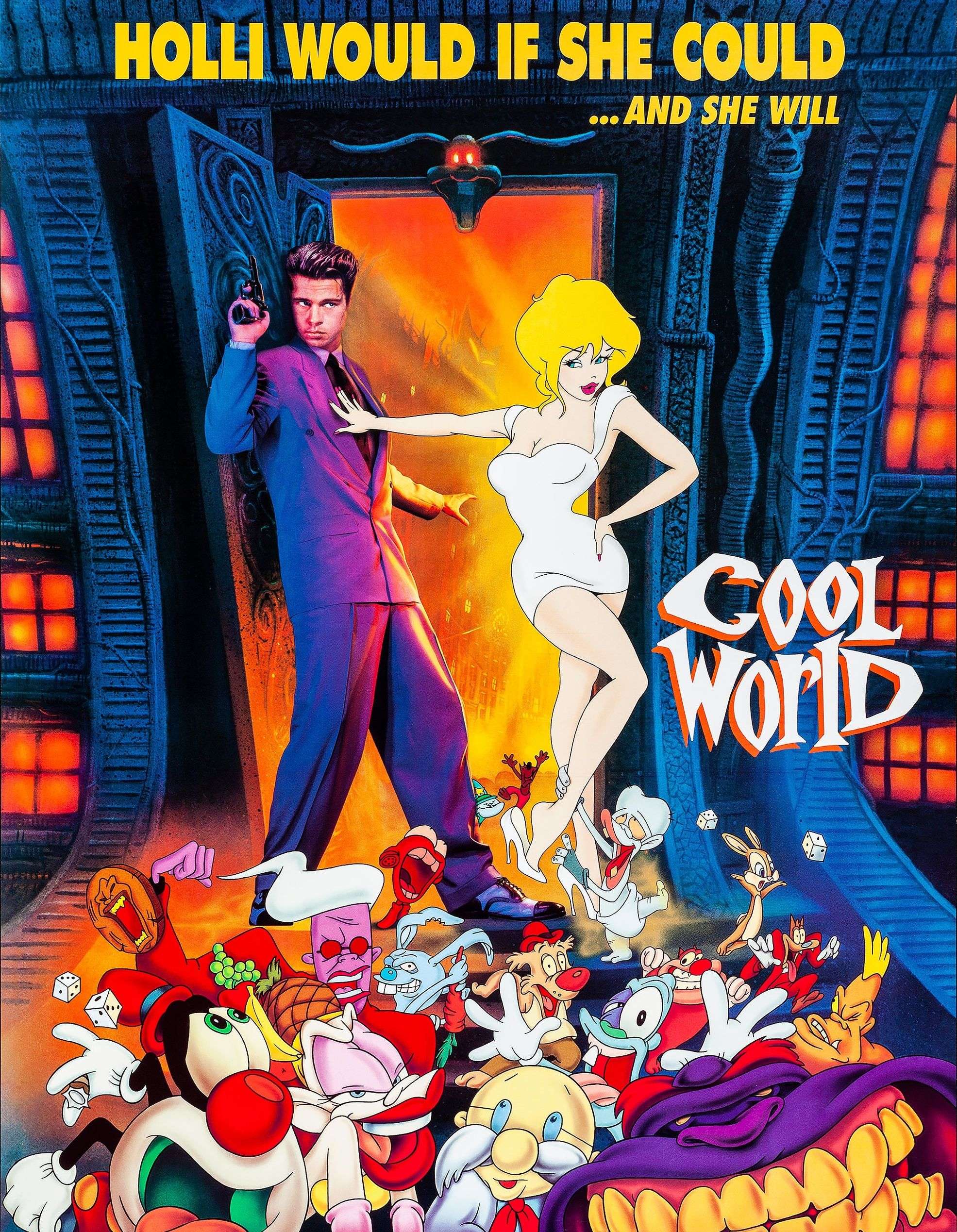
Cartoonist Jack Deebs has been serving a ten-year prison sentence for killing a guy he found in bed with his wife. However, he gets glimpses of an alternate universe known as the ‘Cool World,’ as well as a femme fatale persona known as Holli.
All of this motivates him to start a comic book series while serving his term. Shortly after his release, however, Jack is transported into the Cool World as part of a plot by Holli, who intends to seduce him and transform herself into a human.
Frank Harris, on the other hand is a detective and also the only other human being in Cool World, who confronts Jack telling him that the alternate dimension existed way before Jack even created the comic series.
He also warns the cartoonist about the forbidden law that ‘noids’ as in humans are not supposed to indulge in any form of a sexual activity with the ‘doodles’who are basically the cartoon characters of the Cool World.
Nevertheless, Jack ends up breaking the law with Holli and the latter transforms into a noid disrupting the balance between both the worlds.Holli, who has plans of her own will do anything it takes to retain her noid form forever.
With a flamboyantblend of animation and live-action sequences, Ralph Bakshiwhips up literally the hottest action around with his 1992 live action/animated black comedy fantasy flick, Cool World.
The compelling narrative by Michael Grais and Mark Victor was highly praised for its originality thereby appealing a large section of enthusiastic, devoted movie fans in due course. The film shares many of Bakshi’s characteristics: it is inventive, fascinating, and most importantly, fearless.
With a running period of 102 minutes, the film progresses at a fast pace, changing between comic, sensual, and sorrowful tones without ever losing your attention. To begin with, the premise of real humans merging with cartoons is intriguing, and with Bakshi as the filmmaker, you know exactly what you’re getting.
It is a cult classic anyway! Bakshi’s unconventional take on the old animation genre leading his audience to a spectacular work of animation on display needs a definite mention. Conceptual designer Barry Jackson’s background designs and paintings are impressive and Mark Isham’s background score acts more like a cherry on the cake.
Last but not the least, Bakshi is the real deal here. The fact that he is undeniably a creative genius is evident throughout the film, and his trippy visual scenes are not to be missed. There’s no excuse not to watch this underappreciated masterpiece, especially if you’re a Bakshi fan.
Fire and Ice (1983)

Juliana and her son Nekron, the wicked queen, release a wave of glaciers from their citadel, Icepeak, forcing the people to flee and migrate to the equator. Nekron then sent a mission to King Jarol’s volcanic palace, Firekeep, to request that he submit.
All of this, however, was a deception devised by the evil queen in order for her subhuman minions to kidnap Jarol’s lovely daughter, princess Teegra, and marry her to Nekron to provide them with an heir. Meanwhile, Teegra manages to flee and meets Larn, a young warrior who happens to be the last survivor of a community decimated by the glaciers.
The duo grows close and Larn offers to escort back Teegra to Firekeep. But the princess gets captured and is taken to Icepeak and although Nekron refuses to marry her, he keeps her as a hostage.
Larn, while looking for Teegra comes across a mysterious masked warrior called Darkwolf and the duo teams up to not only save the princess but also stop the queen and her son from conquering the world.
It would not be wrong to come to a conclusion that this 1983 animated epic dark fantasy adventure flick of Bakshi has aged just like wine. It goes without saying that the director did go to greater lengths using the rotoscoping technique in order to achieve that perfect, realistic movement in the animated characters.
Fire and Ice is said to be shot with live actors in black and white and rotoscoped with animation cels actually placed over every frame of the cast members to generate a much more fluid and naturalistic animation.
Over a thousand brush stroked background paintings were meticulously painted for this film, and full credit goes to painters Thomas Kinkade and James Gurney for their outstanding work. While the storyline and characters are kept simple, the design, action, and animation work on display are what genuinely make this film succeed.
The film is dramatic, romantic, passionate, violent, and epic, with a script by Gerry Conway and Roy Thomas. It does not deserve to be forgotten. So, if you are someone who fancies the fantasy genre and love all things Bakshi and animation, this one is certainly for you then!
Wizards (1977)
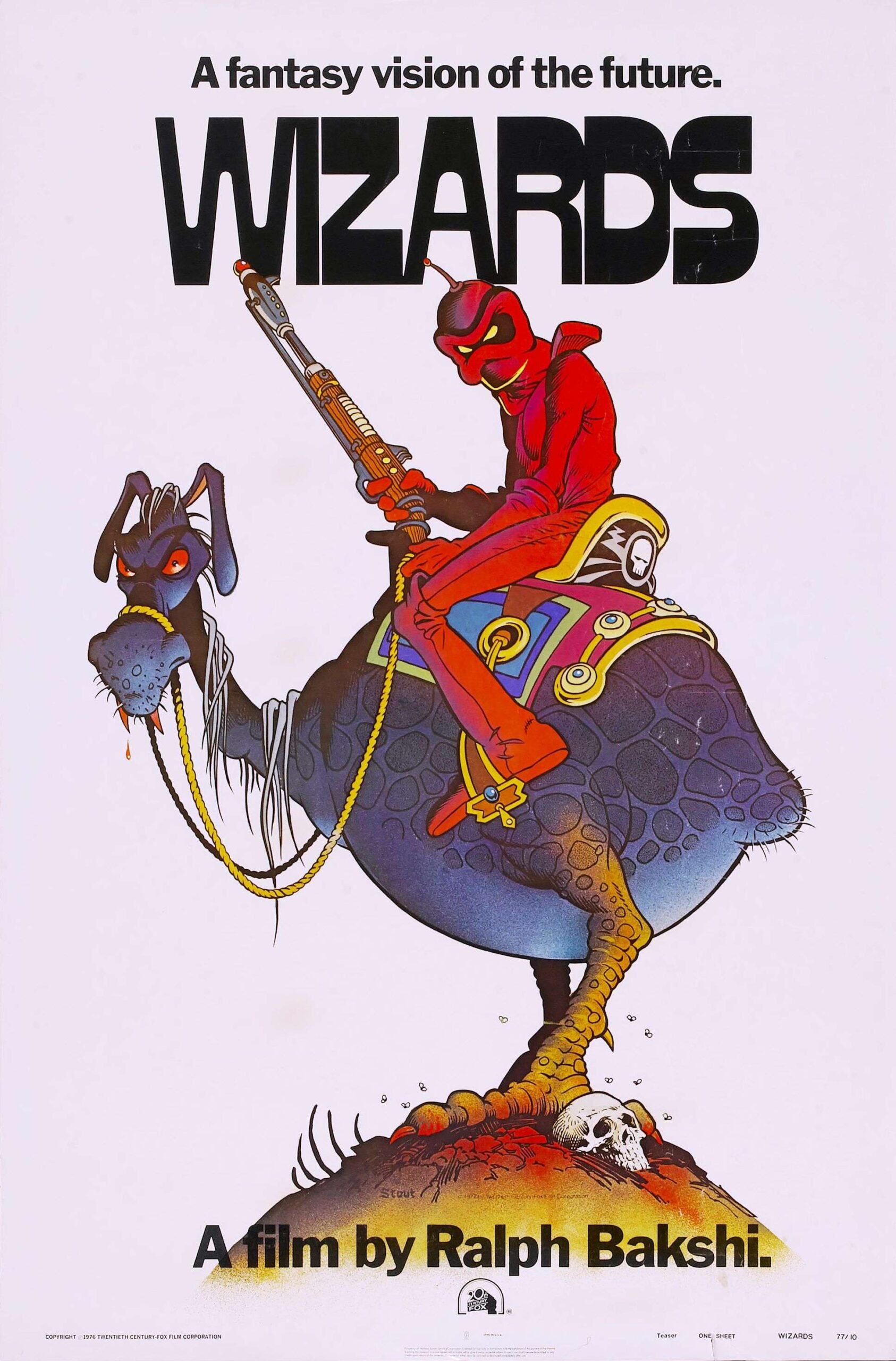
The human race has been wiped out in a post-apocalyptic Earth, and the actual ancestors of humanity, mainly fairies, elves, and dwarfs, have returned and repopulated the globe. When Delia, the queen of fairies, gives birth to twin wizards, Avatar is good and kind, but his deformed sibling Blackwolf is violently wicked.
After losing a battle against his brother, Blackwolf flees the idyllic land of Montagar and vows to return to exact his revenge. 3000 years later, Blackwolf has ascended to the throne of Scortch’s terrible wasteland.
He along with his army of goblins, ogres, wraiths, demons, dragons and mutants have also been restoring ancient technology and soon sets out to get his vengeance on the new world and destroy his brother.
Avatar, on the other hand, also sets out to the dark land of Scortch accompanied by Weehawk the elf warrior, Elinore the fiery, young fairy princess and Peace the robotic assassin who was initially sent by Blackwolf to kill all believers in magic. The brothers are eventually led to the ultimate battle of good versus evil and it is up to them to decide the fate of the new world.
This 1977 animated post-apocalyptic science fantasy flick by Bakshi happens to be an exciting blend of fantasy visuals and his standard acuity. As the director, producer and writer of Wizards, Bakshi actually did storyboards for every last shot in this film and even went to the extent of being the voice of three different characters in the movie – Fritz, Lardbottom and Stormtrooper.
This underappreciated gem features some weird and innovative animation, while Andrew Belling’s mysterious background score transports you to a whole new universe, leaving you speechless. The film’s climax, particularly the rotoscoped fight scene, is thrilling; it is easily one of the coolest animated wars ever seen.
Ian Miller, a British illustrator, was flown in from England to work on the graphic backgrounds of Scortch in the film. There’s no doubting that this film is a timeless classic. You deserve to indulge yourself in this illustrative retro-future fashioned film, one that is packed with trippy psychedelic animation, a lot of unforgettable characters and a delightful journey.
The Lord of the Rings (1978)

Sometime early in the second age of Middle-earth, elven smiths created nine Rings of Power for the humans, seven for the Dwarf-Lords
and three for the Elf-Kings . Shortly afterwards, the Dark Lord Sauron makes the Ruling Ring also known as the One Ring in the hopes of ruling them all post learning the secrets of how to create them from the Elves of Hollin. PrinceIsildur manages to defeat Sauron and takes the Ring but he loses it and gets killed by the orcs.
This results in the Ring lying at the bottom of the Anduin river for more than 2,500 years.Over a period of time, Sauron is successful in capturing the Nine Rings and ends up converting their possessors into the Ringwraiths. As for the One Ring, it’s found by Déagol.
However, his cousin Sméagol kills him and takes the Ring for himself. Sméagol is transformed by the Ring into the horrible beast Gollum, and he follows it to a cave in the Misty Mountains. Bilbo finds the Ring within Gollum’s cave around a hundred years later and brings it back to the Shire.
Many years later, at Bilbo’s birthday celebrations, the wizard Gandalf instructs him to leave the Ring with his nephew Frodo, which Bilbo accepts. 17 years later, upon learning that the evil forces have found out that a certain Baggins is in possession of the Ring, Gandalf tells Frodo the history of the Ring and the threat it poses.
Frodo is eventually given the task of destroying the One Ring and he is accompanied by three hobbits – Pippin, Merry and Sam along with Gandalf, Aragorn, Boromir, Legolas and Gimli the dwarf. What follows is a thrilling yet perilous journey, one that’s filled with incredible adventures.
Ralph Bakshi opted to give J. R. R. Tolkien’s high fantasy masterpiece, commonly known as The Lord of the Rings, an animated spin long before Peter Jackson took us on an epic fantasy exhilarating journey with his rendition of The Lord of the Rings.
Bakshi’s 1978 animated dark fantasy adventure picture, it goes without saying, not only managed to capture the true essence of Tolkien’s excellent writing, but it also became a cult classic over time.
In fact, this movie was the first fully rotoscoped animated feature; to provide a sense of realism especially for the battle scenes, Bakshi used live-action footage of actors dressed as orcs, theNazgûl, even the human characters and then rotoscoped it to fit in with the animation. Remember Sergei Eisenstein’s 1938 Soviet historical drama film, Alexander Nevsky?
Well, Bakshi ended up using the war footage of the film for some of his rotoscoped animation scenes. Coming back to the movie here, Bakshi created an entirely new, fresh form of form. He literally manages to bring the subtleness of Middle-earth to life in a rather dark and mysterious way, something that traditional animation or even live action for that matter could not have done.
Then there’s Leonard Rosenman’s superb orchestral score, which was nothing short of symphonic perfection, and Timothy Galfas’ outstanding cinematography. It’s no surprise that the film received the Golden Gryphon prize at the 1980 Giffoni Film Festival.
Fritz the Cat (1972)
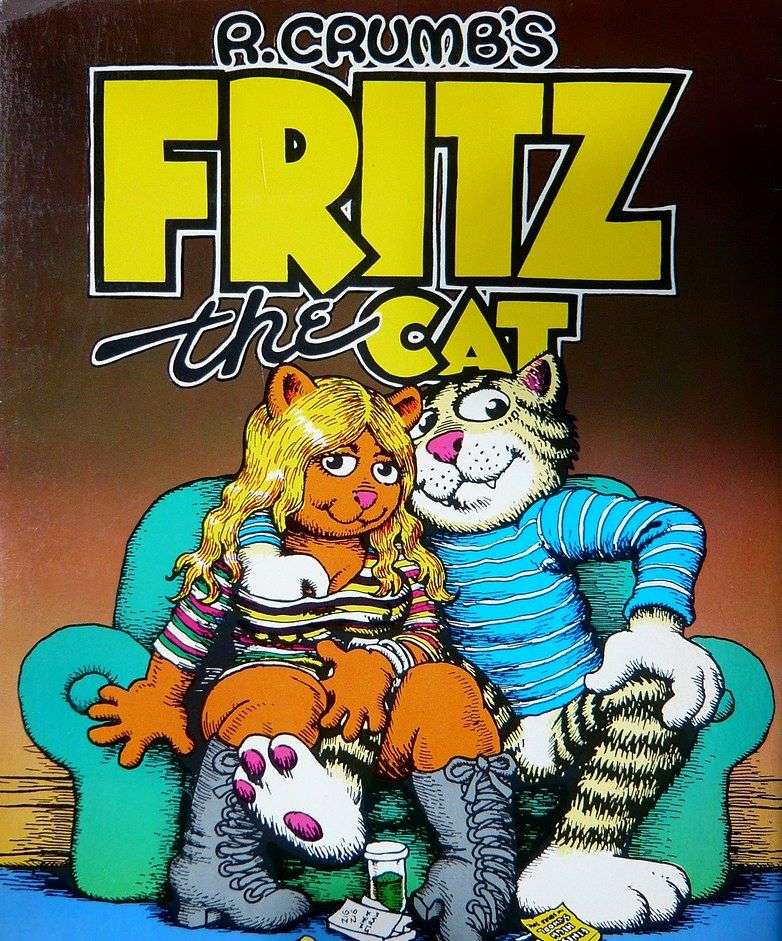
Give a warm welcome to the one who started it all. With this adult animated black humour picture from 1972, Bakshi made his directorial debut. The novel is set in the 1960s in a supercity filled with anthropomorphic animals, and is based on artist R. Crumb’s comic strip Fritz the Cat.
Fritz, a feline college student in New York City, exploits academic buzzwords and hippy flair to gain access to easy sex and drugs is the focus of the story. He drops out of college on the spur of the moment, mistakenly starts a racial riot, and also becomes a leftist revolutionary, all while experiencing the pinnacles of hedonism (0:06) and sociopolitical consciousness.
Very few movies have been able to capture the raw, gritty essence of New York City back in the 60s. This brings us to Bakshi, who simplyleft no stone unturned to expose that particular era with Fritz the Cat. The movie features a lot of allegorical symbolism and only if you pay close attention, you will realize what a genius Bakshi is!
The animation on display is extremely effective; a plethora of styles was used, each according to the mood of the scene and sure to charm you! Add to it the background score by Ed Bogas and Ray Shanklin and you are in for a treat! Mind you, this is not a film for everyone. It can be quite offensive to a lot of people, and even vulgar to some.
Fritz the Cat is the first animated film to obtain an X-rated certificate from the Motion Picture Association of America. If you’re wondering why, it’s because the film contains full-frontal nudity of cartoon animals partaking in some fairly explicit sexual behaviours. But, then again, we’re discussing Bakshi and his work.
He didn’t make the movie just for the purpose of frightening his audience. He cranked it up to demonstrate what life was like in the swinging 1960s. The film is unquestionably one of Bakshi’s best, and if you, too, want to “seek the truth,” carve out 80 minutes from your calendar and give it a go.
American Pop (1981)
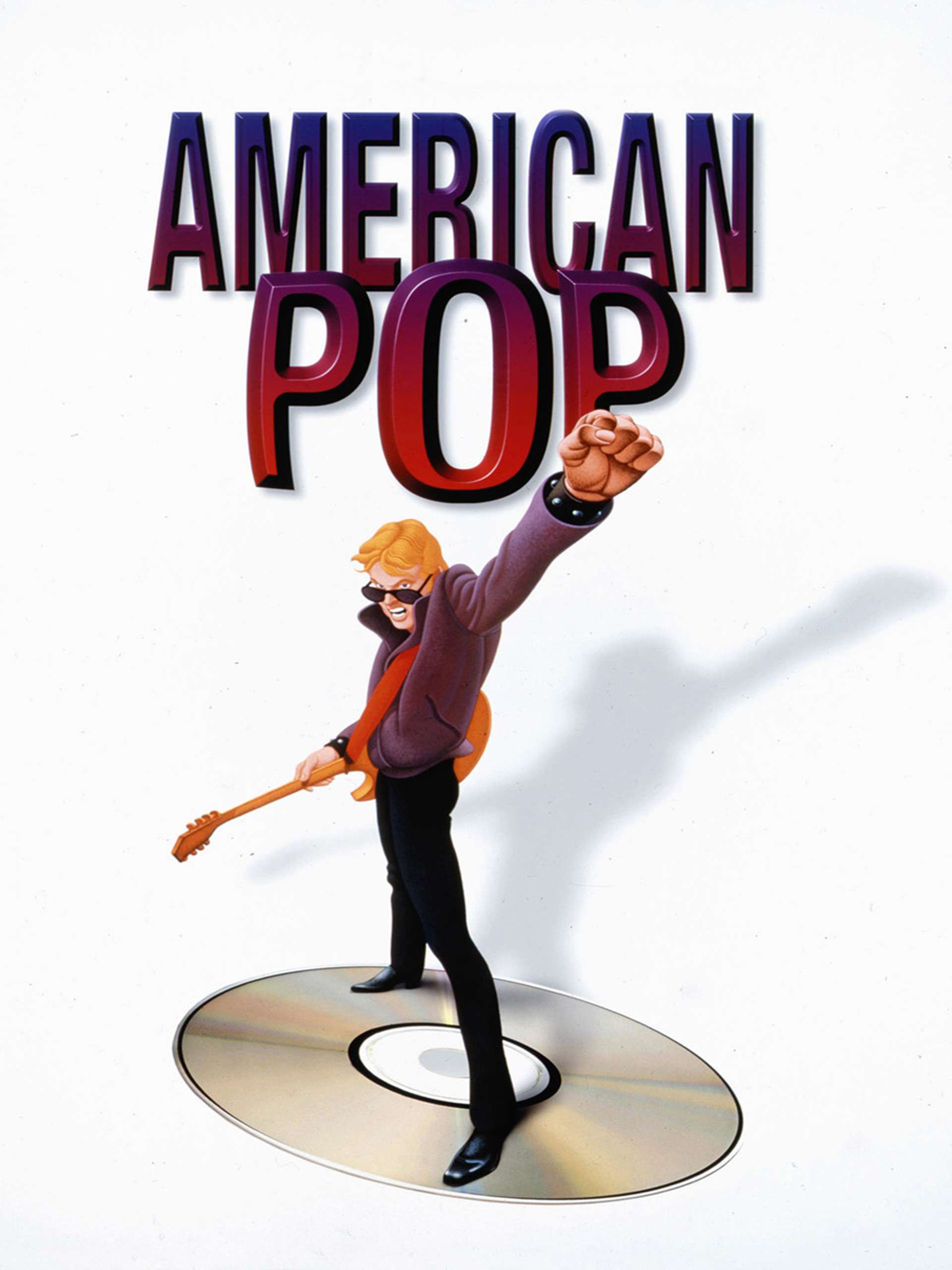
The four generations of a Russian Jewish refugee family of musicians whose occupations correspond to the history of American popular music in the twentieth century are the focus of this adult animated musical drama from 1981.
Zalmie, a young immigrant, arrives in New York City at the start of the story. He becomes addicted to the entertainment industry, but a terrible event destroys his voice and puts an end to his singing career.
He falls for a stripper, marries her, and has a kid named Benny, who goes on to become a jazz pianist. Despite the fact that Benny is killed during WWII, his son Tony enjoys success as a songwriter in the 1960s, as does Tony’s son Pete, who goes on to become a star in the 1980s.
Boasting a 7.2 rating on IMDb, it would not be wrong to admit that with American Pop, Bakshi was literally the closest to perfection. His style of animation here shows how much he was ahead of his time.
We are stressing on the intertwining of real footage and photos from before that brings a certain level of realism and makes it look so original.While the majority of the flick’s animation was done via rotoscoping, the movie also made use of water colours, computer graphics, some live-action shots and archival footage.
Bakshi as the director and co-producer of the film did his background research pretty well and with the characters on display, he managed to achieve the essential goal that literally every cartoonist strives for.
What’s more, you’ll find yourself relating to the characters as you watch the film, and what could be better than that? American Pop was, without a doubt, a risky experiment that paid out handsomely, and we can credit Bakshi for that. For everyone who like music, animation, and, most importantly, Ralph Bakshi, this is an underappreciated gem.
Coonskin (1975)
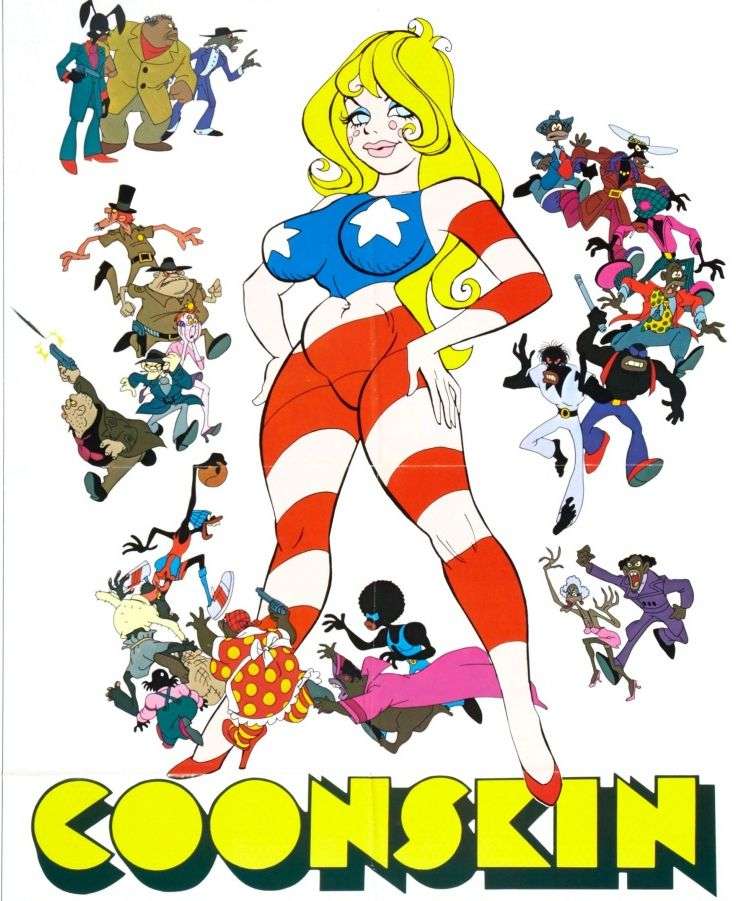
This 1975 satirical criminal picture, which Bakshi considers to be his best, follows three African American brothers, Brother Rabbit, Brother Bear, and Preacher Fox, as they rise to the top of the organised crime racket in Harlem, crossing paths with crooked cops, con artists, and, of course, the Mafia. Bakshi, the film’s director and writer, was astute enough to make Coonskin more of a live-action-animation combination.
Always known as the one to do anything but ordinary, Bakshi comes up this transgressiveflick with the sole purpose of mocking race-related typecasts. Besides being an excellent piece of brutal satire, the film is also a piercing commentary on a lot of prevalent prejudices that still exist today.
Why else would Quentin Tarantino say, “serious treatment of this very fearless satirical artist is long overdue” while describing Bakshi’s incendiary piece of work in the Blaxploitation genre. The animation featured here is intentionally unpolished; the blend of animation and the real backdrops actually makes Coonskin look quite fascinating.
Everything from the montages, the long takes to the endlessly warped designs of the characters on display works in favor of this entertaining thought-provocating flick. Highly recommending this movie to anyone who wishes to be a part of the permeating aerosphere of racism that Bakshi has tried to deconstruct via this flick.
Heavy Traffic (1973)
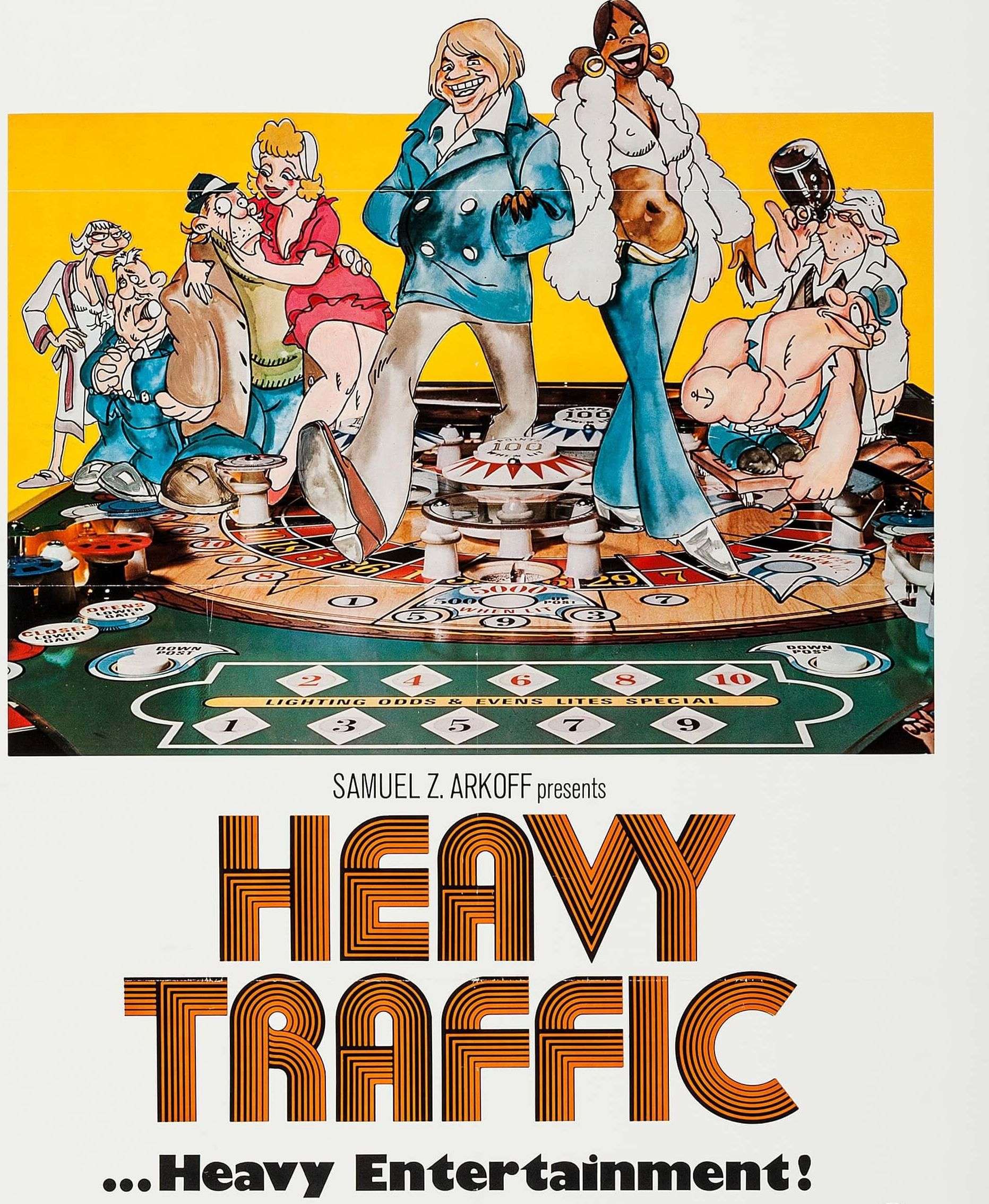
In cartoons, the jobless Michael takes inspiration from the harsh, brutal world around him. Michael is frequently mocked and looked down upon by his friends since he shares an apartment with his continuously warring parents — the Italian father and the Jewish mother.
Carole, a female black bartender, is his friend, and she provides him free drinks in exchange for drawings of her obnoxious white manager. Michael eventually gets the chance to sell an elderly movie boss a comic strip idea, but the unusually harsh tone of his storey kills the mogul.
Further complications arise when Michael’s father, Angie, tries to make use of his Mafia influences to put a killing contract on his son for apparently tarnishing the family’s name by getting involved with a black woman.
Hats off to Bakshi’s 1973 Heavy Traffic, which is an animated feature thatstarts, ends and occasionally combines with live-action filmed on location.This visually stimulating comedy drama written and directed by Bakshi is widely recognized as his biggest critical success.His rotoscoped animation gets an edge thanks to Ed Bogas and Ray Shanklin’s musical score stating that the movie is far more than just to be treated as a cartoon.
We all know how unique his animation abilities are, and the fact that he has combined animation with real stills and film sequences adds a whole new dimension to this video.
The fact that Bakshi has literally poured every element of his culture, wrath, anguish, and contentment into every frame of this picture is also one of the reasons why it works. Do not pass up the opportunity to witness this brilliant satire. It is, without a doubt, a complete blast.
Hey Good Lookin’ (1982)
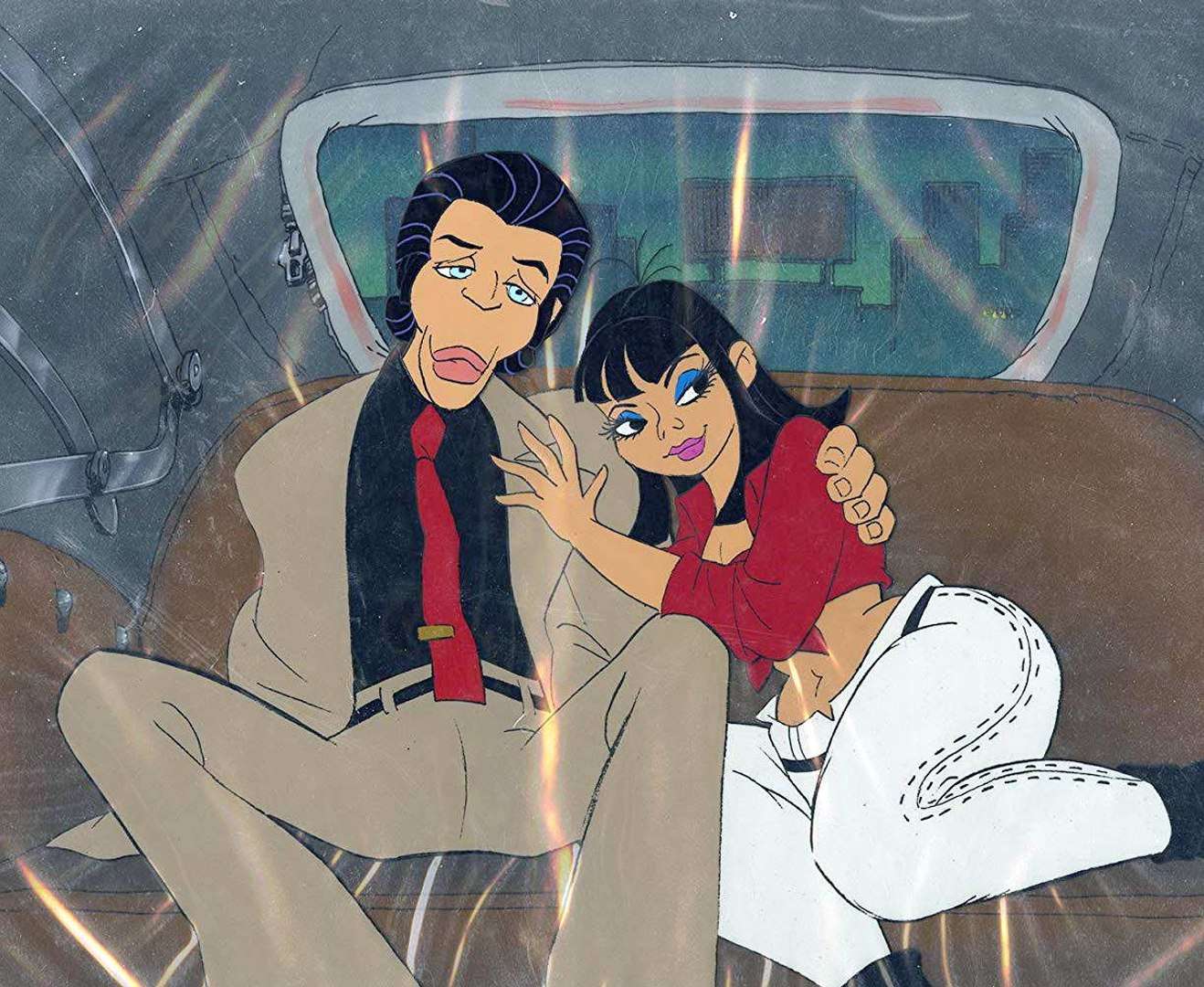
A strong built middle-aged woman meets a mysterious man wearing a trench coat and a fedora in the year 1980. He greets her and shows her what’s left of a black leather jacket, and the woman bursts into tears at the sight of the jacket’s remains. The man decides to tell her a narrative set in Brooklyn during the 1950s.
Vinnie, the head of the group known as “The Stompers,” his closest friend Crazy Shapiro, Vinnie’s lover Rozzie, and Eva, who is not only Rozzie’s best friend but also Crazy Shapiro’s girlfriend, are the central characters in his story.
Although the original version of the film remains unreleased to this date, nothing could stop Bakshi’s Hey Good Lookin’ from having a massive cult following. Not many know this but the movie was originally finished shooting featuring both live-action and animated characters.
Only the four main leads were animated and the rest were live action characters shot on live action sets. This 1975 version according to Warner Bros. was unsatisfactory or rather unbelievable and certain references from Bakshi’s 1975 Coonskin controversy were also cited. Bakshi was left with no other choice but to remove all of the live action footage.
He even went to the extent of reanimating it and finally had the film officially released in 1982. Thank God for the ultimate outcome, for the film is unquestionably one of his best. Bakshi’s animation is very outstanding in this video.
His rotoscoped pieces have always had an organic feel to them, and in Hey Good Lookin’, he ups the ante with a wholly unique musical score. Keep an eye out for the climax, which is one of the film’s highlights. This is highly recommended, and if you’re unsure where to start, simply go to YouTube.
